Summary:
- Palantir’s Artificial Intelligence Platform appears to be driving a growth reacceleration, particularly amongst US commercial customers.
- Palantir is also increasing its infrastructure offerings, although it may take time for the financial impact of this to build.
- The government side of the business is currently a drag, but Palantir is well-positioned to capitalize on rising software spend in defense applications.
- While Palantir’s fundamentals look solid, the company’s valuation is fairly extreme, resulting in elevated downside risk and limited potential near-term gains.
Michael Vi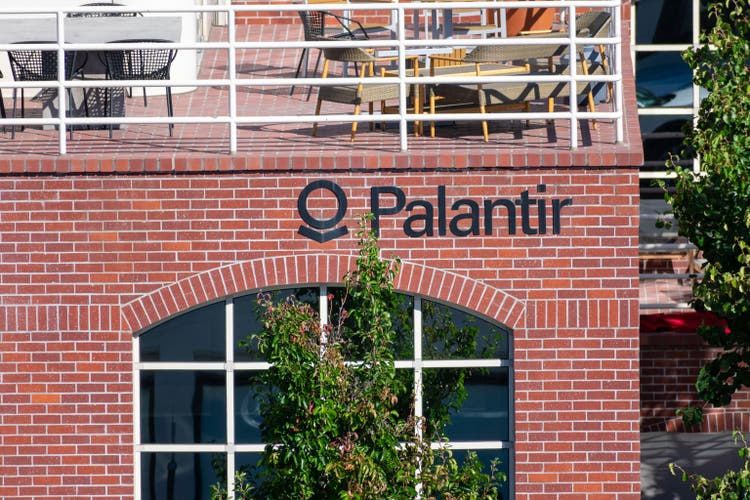
Palantir Technologies Inc.’s (NYSE:PLTR) business has begun to demonstrate genuine strength in recent quarters, which the company is largely attributing to its Artificial Intelligence Platform. Growth currently varies significantly across customer segments though, hiding some of this strength.
While Palantir’s valuation exposes investors to a lot of downside risk, and probably caps upside in the near-term, Palantir’s consistent performance and ability to create a compelling narrative will probably continue to support the share price.
I previously suggested that Palantir’s growth was likely to continue accelerating on the back of AIP but that it might not be enough to meet rapidly inflating expectations. While growth has picked up, Palantir has also continued to benefit from multiple expansion, which is not that surprising given current hype around AI.
Palantir Business Updates
Palantir provides a data management platform that leverages the capabilities of AI. It enables users to integrate data from a range of sources and perform analysis in a scalable manner. AIP brings the capabilities of LLMs to Foundry, which Palantir believes increases accessibility. Based on the recent surge in demand, this appears to be the case so far.
Recent commentary by Accenture plc (ACN) suggests that while customers are beginning to deploy meaningful amounts of money into generative AI, this is still largely exploratory, with most companies lacking the technology infrastructure to fully realize the value of AI. This aligns with Palantir’s suggestion that customers are struggling to implement their own AI solutions. Palantir could be an early beneficiary of generative AI demand in this regard, as its platform should address a lot of customer pain points and enable a faster time to value creation. Not all companies will want to outsource data infrastructure though or pay millions of dollars annually.
Palantir is trying to drive adoption of AIP through bootcamps. These are hands on sessions where customers work with Palantir engineers to deploy AI in operations. This is a combination of training and developing initial use cases. Palantir is seeing momentum, particularly in the US commercial business, but believes that it is still early. The company has completed more than 560 bootcamps across 465 organizations to-date, which the company believes is compressing sales cycles and accelerating customer acquisition. Palantir is also working with channel partners in certain regions, including Japan, recently expanding its partnership with Fujitsu to try and increase adoption of AIP globally.
The extent to which Palantir has an advantage long-term probably depends on whether the platform’s ontology genuinely helps LLMs to provide accurate and relevant data. This is unclear as longer context windows and RAGs could undermine any advantage.
In addition to its data platform, Palantir has developed infrastructure technology to support its own business and is increasingly opening this up to customers. Mission Manager is a new infrastructure bundle (Apollo, Ontology SDK and Rubix) which enables software integration. Mission Manager is now available for every government program with full IL6 security.
Apollo is an infrastructure abstraction layer which reduces the complexity of deploying and managing applications across heterogeneous environments. Rubix is Palantir’s custom Kubernetes infrastructure. It provides a secure and scalable scheduling and execution engine for distributed compute frameworks.
Palantir is also giving customers access to highly secure infrastructure, opening up government opportunities. FedStart enables customers to run their products within Palantir’s secure and accredited environment and is built on Mission Manager’s capabilities. This significantly lowers the barriers to offering governments software and accelerates time to market.
- FedStart IL5 – available now.
- FedStart IL6 – Q2 2024.
- FedStart FedRAMP High – Q4 2024.
Growth from Palantir’s government business has been relatively soft in recent quarters, but Palantir doesn’t believe this reflects the true state of its business. Some of this is due to the timing of large contract awards, with the US Army recently selecting Palantir for the next phase of TITAN. This contract is worth almost 180 million USD and involves the development of 10 TITAN prototypes, including five Advanced and five Basic variants. TITAN is a system that collects data from a broad range of sensors, providing situational awareness and situational understanding. The main difference between the variants is that the advanced version includes a direct downlink from space-based assets.
Palantir also recently extended its partnership with the Army to continue developing and operating the Army Vantage platform. This platform is used for data-driven operations and decision making.
While these contracts aren’t necessarily that important in isolation, the use of software in military applications is likely to continue expanding and Palantir is well positioned to capitalize on this. Palantir has estimated that the US Army only spends around 0.015% of its budget on command-and-control software at the moment and believes that this will increase substantially over time.
Financial Analysis
Revenue was 608 million USD in the fourth quarter, up 20% YoY, with commercial revenue increasing 32%. The US commercial business increased 70% YoY, which Palantir attributed to AIP.
Palantir expects 612-616 million USD revenue in the first quarter, representing 17% growth at the midpoint. For the full year, the company expects 2.652-2.668 billion USD revenue, a 20% increase implying a substantial acceleration through the year. US commercial revenue is expected to increase at least 40% in FY2024.
Figure 1: Palantir Revenue Growth (Source: Created by author using data from Palantir)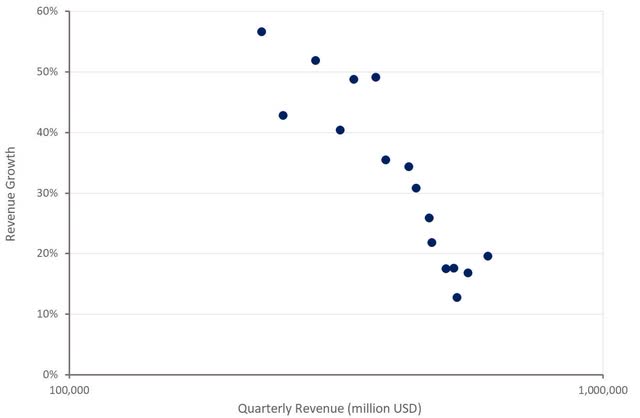
Commercial revenue increased 32% YoY in the fourth quarter, with the US commercial business up 70% and international commercial revenue increasing 11%.
Fourth quarter government revenue grew 11% YoY, with US government revenue up 6% and international government revenue increasing 27%. International government revenue included the receipt of funding which resulted in a revenue catch-up for the quarter. Palantir expects its US government business to accelerate in 2024.
Figure 2: Palantir Revenue by Customer Segment (Source: Created by author using data from Palantir)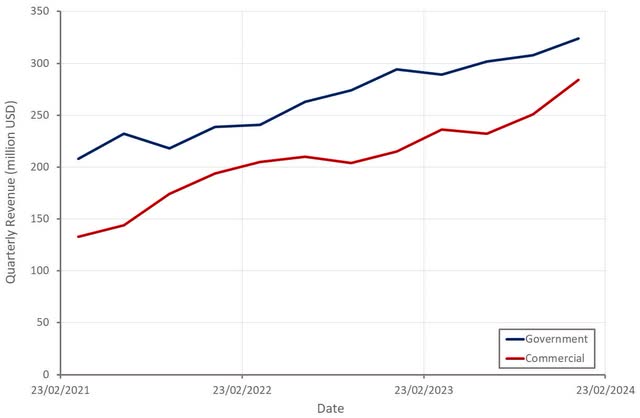
Palantir’s customer count was 497 in the fourth quarter, a 35% increase YoY. Customer growth is being driven by commercial customers, particularly in the US. While Palantir’s customer count is still low, the company continues to land large contracts.
Net dollar retention in the fourth quarter was only 108%, although this is a backward looking figure that is yet to really benefit from the reacceleration of the US commercial business. Fourth quarter trailing 12-month revenue from Palantir’s top 20 customers increased 11% YoY to 55 million USD per customer.
Table 1: Palantir Q4 2023 Deals Closed (Source: Created by author using data from Palantir) Figure 3: Palantir Net Customer Additions (Source: Created by author using data from Palantir)
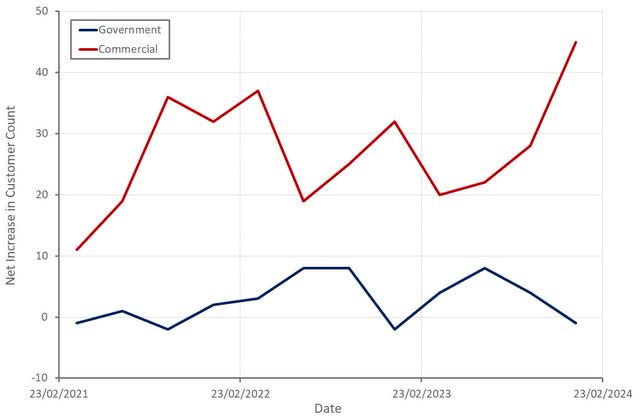
Palantir’s margins continue to scale in a steady manner, which is something that many software companies have failed to achieve in recent years. Improvement in the fourth quarter was more modest than previous quarters though. This appears to be largely attributable to sales and marketing expenses. General and administrative expenses remain relatively high, meaning this is an area that should contribute to further improvements in profitability going forward.
Figure 4: Palantir Profit Margins (Source: Created by author using data from Palantir) Figure 5: Palantir Operating Expenses (Source: Created by author using data from Palantir)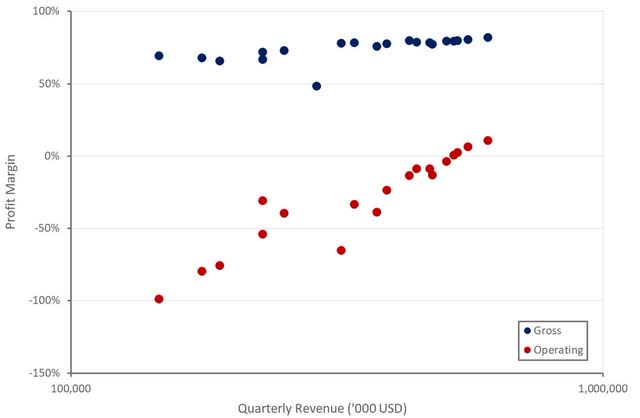
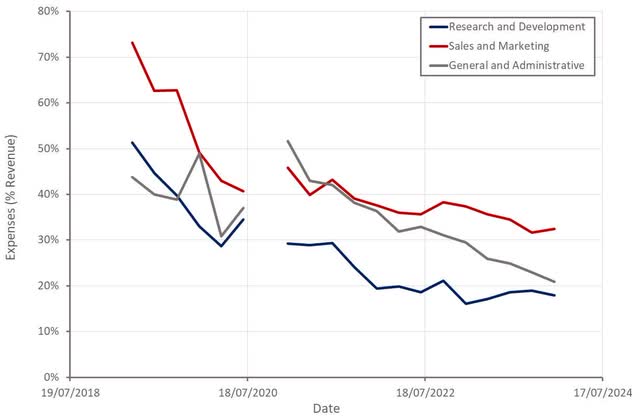
Palantir’s job openings picked up in early 2024 which is supportive of the recent improvement in revenue growth. A number of software companies have increased hiring significantly in recent months, which could be suggestive of an improved demand environment. For some companies, it probably also indicates under hiring in 2023 though.
Figure 6: Palantir Job Openings (Source: Revealera.com)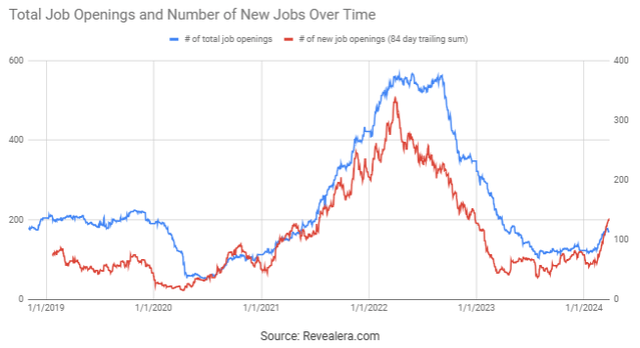
Conclusion
Palantir’s growth has improved in recent quarters and should increase further in 2024, particularly if the company’s government business strengthens. Palantir is also both profitable and generating free cash flow, with the company’s margins continuing to steadily improve. These factors, along with a strong narrative, have contributed to Palantir’s premium valuation.
Palantir’s revenue now looks excessive relative to peers with similar growth and profitability profiles though. This probably doesn’t matter while execution is solid, and investors remain infatuated with anything AI related, but valuation will count eventually.
Figure 7: Palantir Relative Valuation (Source: Created by author using data from Seeking Alpha)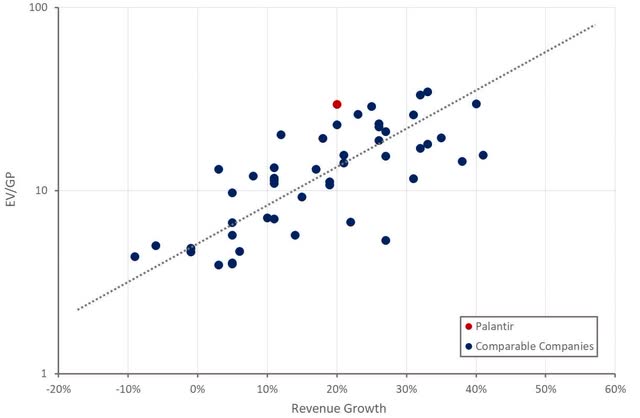
Analyst’s Disclosure: I/we have no stock, option or similar derivative position in any of the companies mentioned, and no plans to initiate any such positions within the next 72 hours. I wrote this article myself, and it expresses my own opinions. I am not receiving compensation for it (other than from Seeking Alpha). I have no business relationship with any company whose stock is mentioned in this article.
Seeking Alpha’s Disclosure: Past performance is no guarantee of future results. No recommendation or advice is being given as to whether any investment is suitable for a particular investor. Any views or opinions expressed above may not reflect those of Seeking Alpha as a whole. Seeking Alpha is not a licensed securities dealer, broker or US investment adviser or investment bank. Our analysts are third party authors that include both professional investors and individual investors who may not be licensed or certified by any institute or regulatory body.
